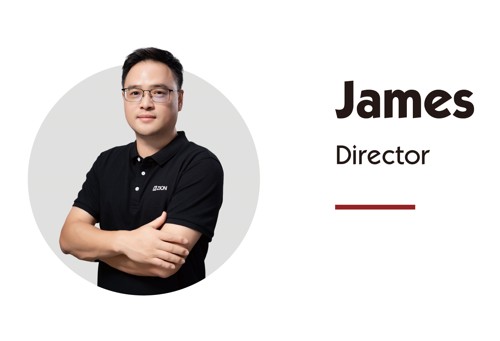Cable & Wire | High quality and excellent service at reasonable prices.
info@zion-communication.com
Author: James Publish Time: 06-08-2025 Origin: Site
Selecting the right fiber optic patch cord is crucial for achieving an acceptable performance level and ensuring compatibility. A problematic pick could lead to the failure of the standards, resulting in signal loss, unreliable data transmission, and the failure of network devices. Here are a few factors to assist you with this challenging decision.
Fiber optic cables can be purchased with various types of connectors, depending on the equipment ports available.
SC: A connector used in, e.g., data centers and telecommunications settings.
LC: A compact connector, suited for cases of high density.
ST: One of the connectors utilized in legacy systems or industries.
FC-Rapidly Screwing-Resistant Connector; a suitable option for environments where vibration is a concern.
At the core of the two varieties of fiber are the following:
Single-mode - long-distance transmission (OS1/OS2), used primarily in MAN/WAN, backbone networks, telecom applications.
Multimode: Multimode fiber optic cables are designed for short-distance transmission (up to 150m-400m) and are widely used in LANs and data centers.
Example: Adding OM4 LC-LC multimode patch cords is typical in the case of a 10G Ethernet link in a data center.

Choose the jacket material best suited to your working or environment:
Jacket Type | Application | Fire Safety |
PVC | General indoor use | Basic flame resistance |
LSZH | Data centers, public areas | Low smoke, halogen-free |
Plenum (OFNP) | Above-ceiling installations | High fire safety |
Armored | Harsh environments/outdoor | Mechanical protection |
Safety First: Use LSZH or OFNP in confined or public spaces to meet fire codes.
Length: The first step is to measure the cable's length accurately, allowing for some slack.
Diameter: (1.6mm / 2.0mm / 3.0mm): The flexible design is suitable for the 1.6mm and 2.0mm diameters and is ideal for high-density routing. On the other hand, the 3.0mm diameter is more durable.

Ensure your cable complies with industry standards and niMetrics requirements
Parameter | Typical Value |
Insertion Loss | ≤ 0.3 dB (SM/MM) |
Return Loss | ≥ 50 dB (UPC), ≥ 60 dB (APC) |
Operating Temp | -20°C ~ +70°C |
Interchangeability | ≤ 0.2 dB |
Durability | > 1000 mating cycles |
✅ Certified cables (with test reports) are always preferred for mission-critical networks.
UPC (Ultra Physical Contact): Flat polish any other equipment utilized in general networks.
APC (Angled Physical Contact): The angled 8° contact surface minimizes back reflection, making it applicable for FTTH, CATV, and specific optical applications.
APC applies in cases where high-speed video or low-reflection applications are involved.
OEM Patch Cord: A patch cord is a cost-effective choice when ordering in bulk for your private-label dealings.
The critical patch cords (e.g., Corning, Senko, Zion Communication) may be tagged with a higher price tag, but their durability and quality are consistently guaranteed.
If OEM work is required, request IL and RL tests and verify compliance with IEC, RoHS, ISO, and UL standards.
Switch to patch cords that conform to:
Follow the ISO/IEC 11801, TIA/EIA-568, RoHS, CE, UL, IEC-61754, GR-326-CORE standards
Ensure the ISO9001 certification for the factory.
Inquire about the individual test reports for the suppliers of large orders.
In the process of selecting a supplier, patch cords:
Factor | Why It Matters |
Technical Support | Helps with custom specs & troubleshooting |
Test Reports Provided | Confirms product quality & performance |
Delivery Lead Time | Affects project schedule |
OEM Capability | Important for branded product procurement |
Reputation / Reviews | Look for client feedback or Google Business rating |
Are your assets compliant with international sources such as IEC, TIA/EIA, RoHS, and ISO 9001?
Why it is essential: Signature versions are great for compatibility, safety, and specification in global telephone or data center networks.
Please provide me with the type of testing you conduct on every fiber optic patch cord, carefully.
Regarding this, why it matters: You should opt for factory testing of both lightly loaded and heavily loaded applications using the interference measurement technique.
Can you furnish this information from a third party, and if so, what kind of documents do you have?
Why it is essential: Authentic documentation is a guarantee of reliability.
What fiber specifications do you have? What types of connectors do you offer?
Why it matters: Verify if the patch panel manufacturer offers a range of solutions.
Do you take custom cable lengths, label them, or work to OEM/ODM requirements?
Why it matters: Customization streamlines viewing, reduces installation time to zero slack levels, and matches with brand or project needs.
What is your average delivery time, and how do you deal with rush orders or a large number of items?
Why it matters: The deadline for delivery is crucial for successful project management and network renovation.
What quality control (QC) steps are taken during the production and packing of the PCB?
Why it matters: Suppliers of trust will carry on the QC activities and also evaluate each shipment for defectiveness and damage to the product.
How do you guarantee that patch cords remain intact through time and are compatible with the surrounding environment?
Why it matters: Take care about patch cords that have standards for temperature, fire safety (low-smoke zero halogen), and mechanical strength.
Could you provide me with any virtual links or case studies related to comparable industries or applications?
Why it is critical: Real-world trials provide evidence to assess the supplier's knowledge and relevant competencies in the industry.
What, say, warranty, the after-sales services, and tech assistance do you offer?
Why it is in every role model's checklist: A reputable supplier prioritizes quality and provides a solution for resolving technical issues quickly.


James is a technical manager and associate at Zion Communication.
Specializes in Optical Fiber communications, FTTH Solutions,
Fiber optic cables, ADSS cable, and ODN networks.
james@zion-communication.com
+86 13777460328
